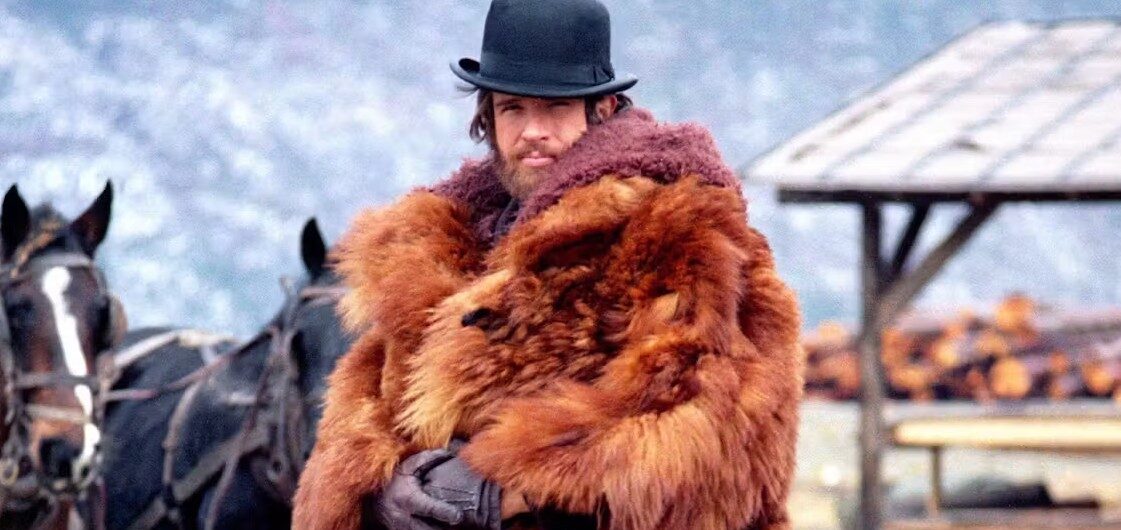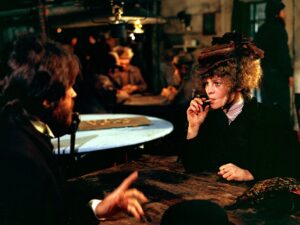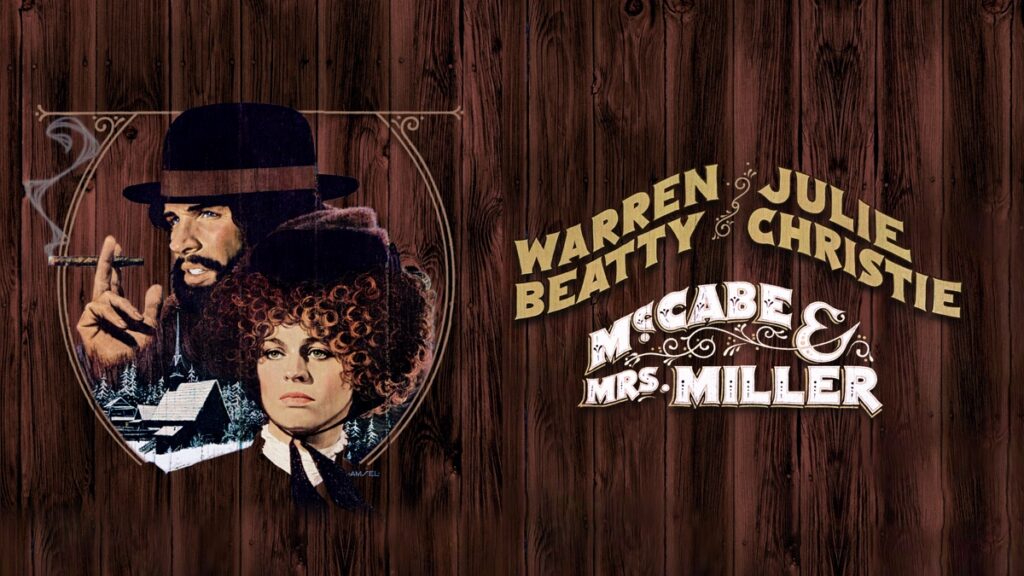McCabe & Mrs. Miller is a 1971 American revisionist Gothic anti-Western film directed by Robert Altman and starring Warren Beatty and Julie Christie. The screenplay by Altman and Brian McKay is based on the 1959 novel McCabe by Edmund Naughton. Altman referred to it as an “anti-Western” film because it ignores or subverts a number of Western conventions. It was filmed in British Columbia, Canada in the fall and winter of 1970, and premiered on June 24, 1971.
The film has received critical acclaim in the years since its release and earned an Oscar nomination for Christie in the Best Actress category. The film was deemed the 8th greatest Western of all time by the American Film Institute in its AFI’s 10 Top 10 list in 2008 and, in 2010, was selected for preservation in the United States National Film Registry by the Library of Congress as being “culturally, historically or aesthetically significant”.
In 1969, Altman was in post-production on M*A*S*H and snuck Foster into the screening; Foster liked the film and signed Altman to direct a film based on McCabe. They agreed to wait until M*A*S*H became a box-office hit to take the pitch for McCabe to a studio for funding. A second screenplay – independent of Maddow’s – was commissioned from Brian McKay, who completed it in only five weeks. A revised version of that screenplay dated July 1970 became the “shooting script” for the film. Altman and McKay are listed in the film’s credits as its screenwriters; Maddow went uncredited.
The film, especially the final scene, is atypical of the western genre. The showdown between a reluctant protagonist and his enemies takes place ungracefully in the snow during the early hours, rather than at “high noon”. Instead of hiding indoors and watching the battle unfold outside, the townsfolk are bustling in the streets and largely unaware of the gunfight taking place in their midst. For a distinctive look, Altman and Zsigmond chose to “flash” (pre-fog) the film negative before its eventual exposure, as well as use a number of filters on the cameras, rather than manipulate the film in post-production; in this way the studio could not force him to change the film’s look to something less distinctive.







